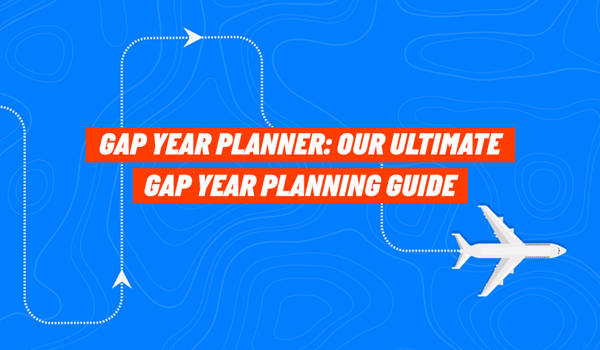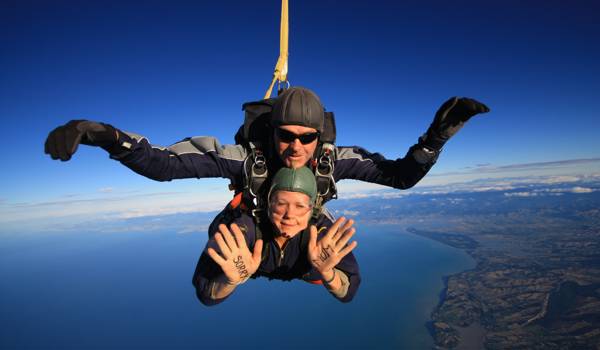Tips on funding your gap year abroad
Dreaming of hiking the Inca Trail to Machu Picchu, exploring Africa's national parks, or backpacking through Southeast Asia? A gap year can be an incredible adventure, but it can also seem daunting when you think about the costs. With careful planning and budgeting, you can make your dream gap year a reality without breaking the bank. Here's a comprehensive guide to help you budget for every step of your journey.

Countdown to your gap year
How Much Does a Gap Year Typically Cost?
The cost of a gap year can vary widely based on several factors, including your destination, travel duration, accommodation choices, activities, and personal spending habits. For instance, travelling in Southeast Asia or Central America can be much more affordable than Canada or Australia.
Working abroad can help offset costs, while volunteering abroad can be a highly affordable way of combining accommodation, meals, local activities and CV-boosting work into one package.
On average, a gap year can cost anywhere from £3,500 to £15,000 or more, depending on your travel style and preferences. Take a look at our suggested itineraries for an idea of what's possible with your budget.
But don't let these numbers scare you! With a well-thought-out budget, you can find ways to save and make your gap year affordable.
Start Budgeting For Your Gap Year Early
Budgeting starts long before you leave home. Here are some key steps to consider during the planning phase:
Decide Your Type of Gap Year
First, decide what kind of gap year you want. Do you prefer a structured itinerary with support, or do you want the freedom to plan your own adventures? Each option has its pros and cons, especially when it comes to costs.
Work and Travel Gap Year - Low Budget
If you're looking to save money, consider finding a paid job abroad. While you'll still have upfront costs like flights, housing, and insurance, earning money while you travel can significantly reduce your expenses. Working holiday programs in countries like Australia, New Zealand, and Canada can help you find jobs and apply for visas.
Check out our range of working holidays to get started.
Planned Gap Year - High Budget
If working isn't in your gap year plan, you can still join structured programs focused on volunteering, language learning, or cultural immersion. These programs can be pricey but offer valuable support and experiences. For example, you could spend a few months in Latin America learning Spanish for a weekly fee or have adventures in Australia for a set cost.
Check out our range of suggested itineraries for inspiration.
Independent Travel Gap Year - Low Budget
Travelling independently gives you the most flexibility but requires careful budgeting. Costs will vary widely depending on your travel style and destinations. Some travellers manage on £10 a day, while others spend over £100. Make sure you have enough saved to cover all your expenses, including travel, food, accommodation, and activities.
Mix of Work, Planned and Independent Travel Gap Year - Mid Budget
Another option is to combine all of the above. With a 12-month working holiday visa in Australia, for example, you could start with a group tour to see some of the country and meet new people before spending a few months earning money with a job. You could then spend the rest of the year travelling independently once you feel more confident and familiar with the country.
This gives you the best of all worlds and means you can save money to fund your trip while still enjoying the benefits of booking organised travel experiences with a travel specialist like KILROY.

Adventures to over 60 destinations
Choose Your Destinations
Once you've decided on your gap year type, think about where you want to go. Be realistic about your budget. For example, £3,000 will last much longer in Southeast Asia than in Australia or New Zealand. Consider the cost of living, exchange rates, and any additional expenses like visas and vaccinations.
Plan Your Timing
Travel costs can vary significantly depending on when you go. Travelling during the off-season can save you money on accommodation, food, and activities. Research the best times to visit your chosen destinations to maximise your budget.
Determine Your Duration
A gap year doesn't have to be a full year. It can be shorter or longer, depending on your budget and plans. Cheaper destinations allow you to stretch your money further, while more expensive places might require a shorter stay.
Pre-Trip Expenses
Before you embark on your gap year, you'll need to budget for several pre-trip expenses. Create a spreadsheet to track these costs:
- Passport: £88.50 for UK citizens.
- Visas: Costs vary by country and type of visa.
- Vaccinations: Check the NHS Fit to Travel website for requirements.
- Travel Insurance: Costs depend on the length of your trip - ask us for a quote!
- Backpack: £50-£150 for a good travel backpack.
- Day Bag: Smaller backpack for sightseeing and shorter trips.
- Travel Shoes: £50-£120 for quality hiking shoes.
- Travel Adapters/Chargers: Ensure you have the right ones for your destinations.
- International Phone Plan: Costs vary by carrier.
- Camera: £100-£800 depending on the type. Or use your phone to keep costs down.
- Money Belt: Around £10 for keeping important documents and money safe.
- Travel Towel: £10-£30 for a compact, quick-drying towel.
- Travel Toiletries: Costs vary based on your needs. Don't forget sunscreen!
- Waterproof Clothing: Invest in a good jacket and trousers.
- Additional Accessories: Padlock for hostel lockers, torch/headlamp, pen knife, etc.
Saving for Your Gap Year
Here are some tips to help you save money in your home country before your trip:
- Start saving early: Put money aside as soon as you know you want to take a gap year.
- Work More Hours: Ask for extra shifts or get a second job.
- Set a Weekly Allowance: Stick to a strict budget for daily expenses.
- Cut Vices: Reduce spending on non-essentials like coffee or alcohol.
- Move Back Home: Save on rent by living with family.
- Use Public Transport: Walk, cycle, or use public transport instead of driving.
- Ask for Donations: Request money for your gap year fund instead of gifts at Christmas or on your birthday.
- Exercise for Free: Use free apps or outdoor spaces for workouts and ditch the expensive gym membership.


Find your perfect Gap Year Program
What To Budget For During Your Gap Year
Your daily expenses will depend on your travel style and activities. Here are some key categories to consider:
Meals
Research average food costs in your destinations. For example, a meal in Thailand might cost £2, while the same meal in Australia could be £15. Plan your budget accordingly.
Accommodation
Options range from couchsurfing and hostels to Airbnbs and hotels. Prices vary by location, so research the best options for your budget.
Transportation
Consider the cost of local transportation, such as buses, trains, and taxis. Plan for travel between countries as well. Opting for rail passes like Interrail Europe is one way to travel more for less. You can also purchase a rail pass in Japan if you plan to cover larger distances by train.
Tours & Activities
Budget for tours and activities you want to do. Some popular activities, like the Inca Trail in Peru, need to be booked months in advance to guarantee availability. Group tours are a great option if you want to travel with others and know how much the experience will cost before you travel.

13 Pro Tips for Budgeting Your Gap Year
- Choose Budget-Friendly Countries: Opt for destinations with lower living costs to stretch your budget.
- Avoid Carrying Too Much Cash: Use international or currency cards to manage your spending.
- Use a Budgeting App: Track your expenses with apps like Spendee or NomadWallet and allocate yourself a daily or weekly budget.
- Buy a Local SIM Card: Save on international phone charges by using local SIM cards.
- Cook Your Own Meals: Save money by cooking instead of eating out.
- Use Public Transportation: Avoid taxis where you can and opt for local buses and trains instead.
- Use Student and Youth Discounts: Take advantage of discounts for students and young travellers. We can help you with an ISIC (International Student Identity Card) or IYTC (International Youth Travel Card) if you're no longer studying.
- Travel Overnight: Save on accommodation by travelling overnight by bus or train.
- Consider Camping: Save on hotel costs by camping or hiring a campervan and rolling your transport and accommodation into one!
- Book Flights Early: Secure cheaper flights by booking in advance.
- Include a Buffer: Budget a little extra for unforeseen costs and miscellaneous expenses.
- Pick Low Cost Activities: Walking is free and a great way to explore a city while saving money.
- Always Compare Prices: Shop around for the best price and search online for any discounts on activities and tickets.
Further Reading
Check out our complete gap year travel guide with these additional resources:


